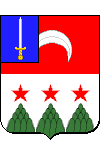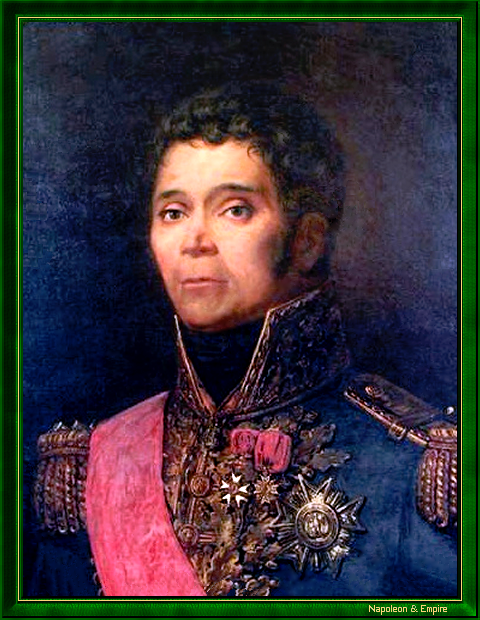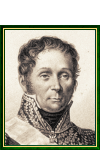François Étienne Kellermann
Count of Valmy
Pronunciation:

François Étienne Kellermann was born on August 4, 1770 in Metz. His father was the future Marshal of the Empire and Duke of Valmy, François Etienne Christophe Kellermann, then a mere captain-commander.
Young François-Etienne followed in his father's footsteps, enlisting at the age of fifteen. He was away from his father from 1791 to 1793, when he served in the French embassy in the United States, but was reunited with him on his return. The son served as aide-de-camp to the father, who was leading the siege of Lyon, not without clashes with representatives of the Convention.
Both were arrested, but in 1795 they simultaneously received commands in the Army of Italy. Their paths diverged when the father was replaced by Napoleon Bonaparte, while the son remained in Italy.
François-Etienne participated brilliantly in the ensuing Italian campaign. He was present at the battles of Arcole and Rivoli, at the siege of Mantua and at the Tagliamento crossing, where he was wounded.
Bonaparte sent him to the Directoire to carry the flags taken from the enemy, then appointed him brigadier general in 1797.
He continued to distinguish himself in Italy in the following years (battle of Nepi or Civita Castellana on December 5, 1798, battle of Toscanella on the 15th, capture of Naples on January 23, 1799). But his most famous feat of arms came on June 14, 1800, at Marengo, when he led a charge that was decisive for the outcome of the battle. This dazzling feat earned him promotion to the rank of division general.
His career continued during the Empire at Austerlitz, where he was wounded, then in the army of Portugal under Jean-Andoche Junot in 1807, and in Spain from 1808 to 1811. Kellermann's career came to a halt when he was accused of various misappropriations. He was forced into retirement.
Kellermann returned to service in 1813, distinguishing himself again at Lützen (May 2) and at Bautzen (May 20-21) and Dresden (August 26-27), where he led a charge at the head of the Polish cavalry. The following year, he distinguished himself again at Bar-sur-Aube on March 2. At the end of the campaign of Northeast France, he rallied to the Bourbons.
In 1815, he joined Napoleon during the Hundred Days and took part in his last cavalry charge at the battle of Waterloo. Kellermann was wounded once again.
Louis XVIII punished his defection by denying him any employment until 1818. Kellermann subsequently obtained the right to bear the title of marquis, then duc de Valmy (after his father's death in 1820), and to sit in the Chamber of Peers, where he voted with the liberals.
He died of liver disease in Paris on June 2, 1835, and is buried with his father in the 30th division of the Père Lachaise cemetery .
"General Kellermann, Count of Valmy". Anonymous painter, Nineteenth Century.

Kellermann's name is inscribed on the 21st column (south pillar) of the Arc de Triomphe de l'Étoile .
Other portraits

"General Kellermann, Count of Valmy". 1814 etching.

"General Kellermann, Count of Valmy". Nineteenth Century engraving.